THANKSVEGAN:A Vegan Cookbook For The
Harvest Holiday <<<<<<<<<<<>>>>>>>>>>>> Roberta Kalechofsky&Roberta Schiff <<<<<<<<<>>>>>>>>>  Thanksvegan: A Vegan Cookbook For The Harvest Holiday, Copyright (c) 2012, Micah Publications, Inc. All rights reserved. Except for fair usage excerpts as defined by copyright law, this book or parts thereof, may not be reproduced without permission of the publisher. For information contact Micah Publications, Inc., 255 Humphrey St., Marblehead, MA 01945. No part of this book purports to give medical advice nor is intended to be used for medical purposes or as a replacement for professional attention. 978-0-916288-59-4 About The Cover by Sara Feldman The front cover is a detail from Sara Feldmans acrylic painting, Bounty. 978-0-916288-59-4 About The Cover by Sara Feldman The front cover is a detail from Sara Feldmans acrylic painting, Bounty.
Thanksvegan: A Vegan Cookbook For The Harvest Holiday, Copyright (c) 2012, Micah Publications, Inc. All rights reserved. Except for fair usage excerpts as defined by copyright law, this book or parts thereof, may not be reproduced without permission of the publisher. For information contact Micah Publications, Inc., 255 Humphrey St., Marblehead, MA 01945. No part of this book purports to give medical advice nor is intended to be used for medical purposes or as a replacement for professional attention. 978-0-916288-59-4 About The Cover by Sara Feldman The front cover is a detail from Sara Feldmans acrylic painting, Bounty. 978-0-916288-59-4 About The Cover by Sara Feldman The front cover is a detail from Sara Feldmans acrylic painting, Bounty.
The original painting is 24 48 wide, and is from her Farmers Market series. The back drawing is an original colored pencil-and-ink done for Thanksvegan. Sara Feldman has a BFA from Carnegie Mellon University. She has been a member of the Depot Square Gallery of Lexington, MA for 28 years. She was a member of the Associated Artists of Pittsburgh and is a member of the Newton Art Association. She has worked extensively in oil, acrylic, pen-and-ink and pencil.
The majority of her oils and acrylics are landscapes, often inspired by the mountains where she has hiked and skied. Still life studies dominate her colored pencil, and pen-and-ink work. She won the design competition for a large stained glass window for "The Sacred Space" at Northeastern University. She was an invited artist in two shows honoring Samuel Rosenberg, one at the Westmorland Museum of Art and one at the JCC of Pittsburgh. She was the illustrator for several years, and then publisher of a prize winning publication on the Holocaust. One of her paintings shown at the Carnegie Museum in Pittsburgh was selected for a purchase prize by the Latrobe School System.
She has done nine covers for Micah Publications, including, The Jewish Vegetarian Year Cookbook, 1997, Vegetarian Judaism, 1998, A Boy, a Chicken & the Lion of Judah, 2nd edition, 2011, and Thanksvegan, 2012. MICAHBOOKS.COMDedicated to Jay Dinsha, 1933-2,000
Who founded the American Vegan Society&To his wife, Freya Smith Dinsha
Who Continues to Lead the SocietyTABLE OF CONTENTS <> <> <> <> <> ~ INTRODUCTION ~Jeremy Rifkins fascinating book, Beyond Beef: The Rise and Fall of the Cattle Culture, appeared in 1992. It traced the symbolic significance of the cow and bull from their early appearance in the Indo-European Kurgan culture around six thousand years ago, their heady status as divine symbols in Egyptian and Middle Eastern civilizations, to their present status as dairy and beef machines, as victims of our industrial and technological civilization. And worse was to happen to cows, as Rifkin describes them as modern locusts devouring the land wherever they appear.The story of western civilization, as Rifkin tells it, is the pursuit of beef protein, yet the value of beef protein was based on a mistake scientists made around 1913 when they observed that newborn laboratory rats grew faster when fed meat than laboratory rats who were not fed meat. Dietitians took up the call for red meat protein for children; no one reckoned on the myriad diseases which too much meat would cause humans. The laboratory rats thrived.Almost from the dawn of beef history, meat has been associated with virility, health, and military prowess.
The Kurgans are the earliest military civilization we know of. Having tamed and learned to ride the horse, they invaded other lands, bringing with them war and the association of cattle with warrior values.The bull and the horse went on to have extraordinary careers in the conquest of South and North America, from the pampas in Argentina to the grass lands of North America, transforming forests, farms, and pastoral lands into cattle ranges. From godhead to the semi-diseased animal of the factory farm the bull symbolized power and virility, as it still does in the cult of the bull fight. Signs in butcher shops often show a charging bull with the slogan beneath, Meat Builds Strength. Yet the bull is a vegetarian animal---as are all the powerful animals---the elephant, the whale, the ox, the buffalo, the rhinoceros. In six thousand years had no one noticed this? As always there were vested interests in this misreading.
As beef became the basis of wealth in England and the United States and a symbol of national power, the association of meat with social status grew. The term, conspicuous consumption, introduced by the economist Theodore Veblen was used to describe thee appetites of Diamond Jim Brady and Lillian Russell, fabulous Broadway creatures in the early 20th century who were known each to devour a two pound steak at a sitting. The term became a metaphor for western civilization.Soon the creation of the railroad, the refrigerator, and the freezer sealed the fate of meat consumption, as it now became possible for ordinary people to consume what Brady and Russell ate, and the eating habits of Americans underwent a radical change.In 1916, American Meat, by Dr. Albert Leffingwell, sounded the alarm about the relationship between the rise in the consumption of meat and the rise in cancer. It was ignored, as were his other books on the spread of experimentation on children and animals. Leffingwells analysis of the problem was interesting, though different from that of such present day doctors as Michael Greger, Nathan Pritikin, Dean Ornish, Milton Mills, Colin Campbell, Caldwell B.
Esselstyn, Neal Barnard, Michael Klaper, and others who have traced diseases to our diet. But Leffingwell was among the first to connect the problem of cancer with meat: he went into the slaughterhouses and observed that cows with cancerous tumors were being sent down the kill line. The understanding of metastasis was limited, and the government believed that if you cut out the observably diseased part of an animal, you cut out the disease. The slaughterers would remove the tumors and send the animals on their way to market.In the 1950s and 1960s, as factory farming and the CAFO system (Confined Animal Feed Operation) became entrenched, with its reliance on hormones and antibiotics, the public became alarmed at the relationship between meat and disease. Rachel Carson sounded a warning in her introduction to Ruth Harrisons book, Animal Machines: The New Factory Farming Industry, by Ruth Harrison (1964):As a biologist whose special interests lie in the field of ecology, or the relation between living things and their environment, I find it inconceivable that healthy animals can be produced under the artificial and damaging conditions that prevail in these modern factory-like installations, where animals are grown and turned out like so many inanimate objects.....As she (Ruth Harrison) makes abundantly clear, this artificial environment is not a healthy one. Diseases sweep through these establishments, which indeed are kept going only by the continuous administrations of antibiotics.In 1985, the journalist Orville Schell wrote American Meat: Antibiotics, Hormones and the Pharmaceutical Farm
Next page

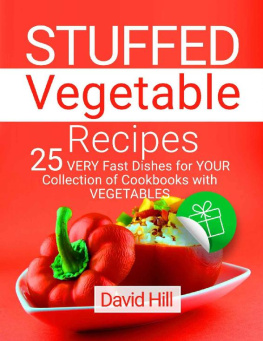
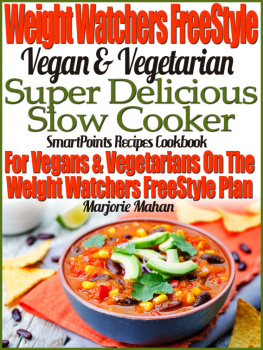


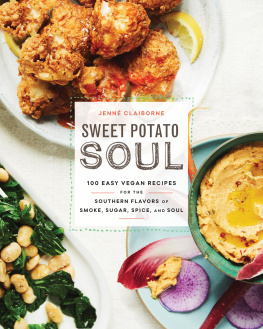
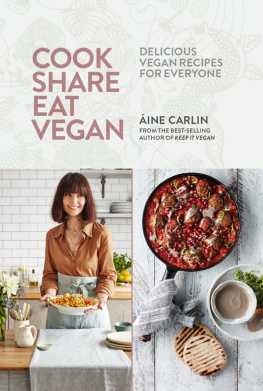
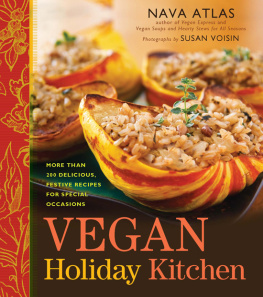
 Thanksvegan: A Vegan Cookbook For The Harvest Holiday, Copyright (c) 2012, Micah Publications, Inc. All rights reserved. Except for fair usage excerpts as defined by copyright law, this book or parts thereof, may not be reproduced without permission of the publisher. For information contact Micah Publications, Inc., 255 Humphrey St., Marblehead, MA 01945. No part of this book purports to give medical advice nor is intended to be used for medical purposes or as a replacement for professional attention. 978-0-916288-59-4 About The Cover by Sara Feldman The front cover is a detail from Sara Feldmans acrylic painting, Bounty. 978-0-916288-59-4 About The Cover by Sara Feldman The front cover is a detail from Sara Feldmans acrylic painting, Bounty.
Thanksvegan: A Vegan Cookbook For The Harvest Holiday, Copyright (c) 2012, Micah Publications, Inc. All rights reserved. Except for fair usage excerpts as defined by copyright law, this book or parts thereof, may not be reproduced without permission of the publisher. For information contact Micah Publications, Inc., 255 Humphrey St., Marblehead, MA 01945. No part of this book purports to give medical advice nor is intended to be used for medical purposes or as a replacement for professional attention. 978-0-916288-59-4 About The Cover by Sara Feldman The front cover is a detail from Sara Feldmans acrylic painting, Bounty. 978-0-916288-59-4 About The Cover by Sara Feldman The front cover is a detail from Sara Feldmans acrylic painting, Bounty.